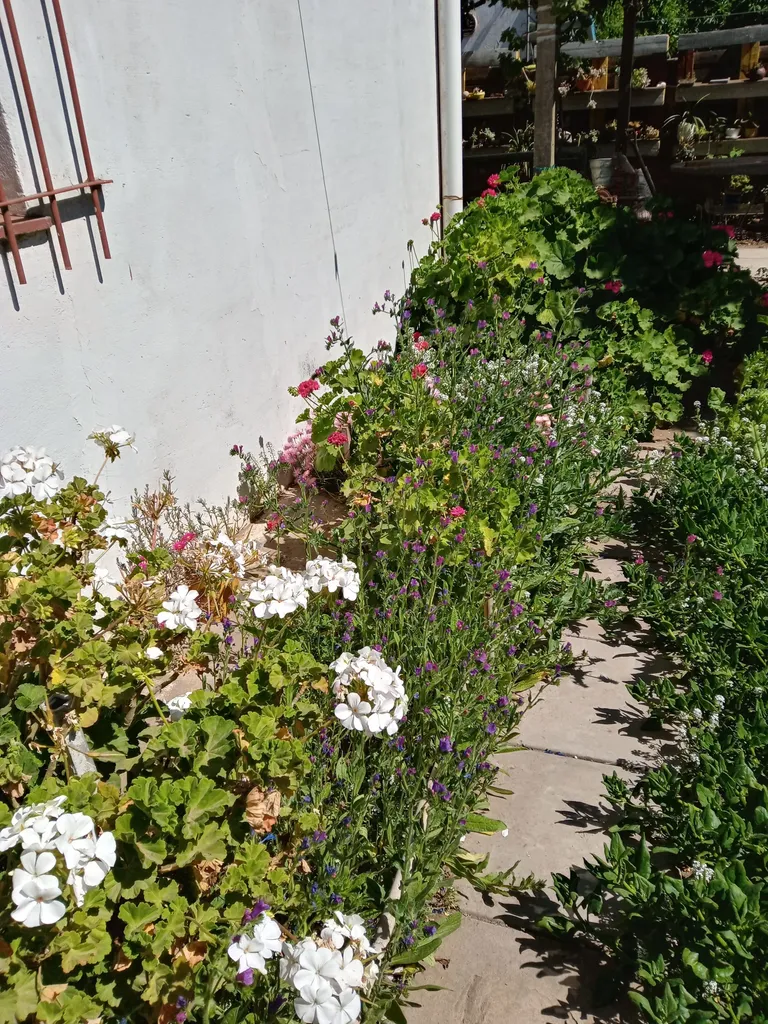
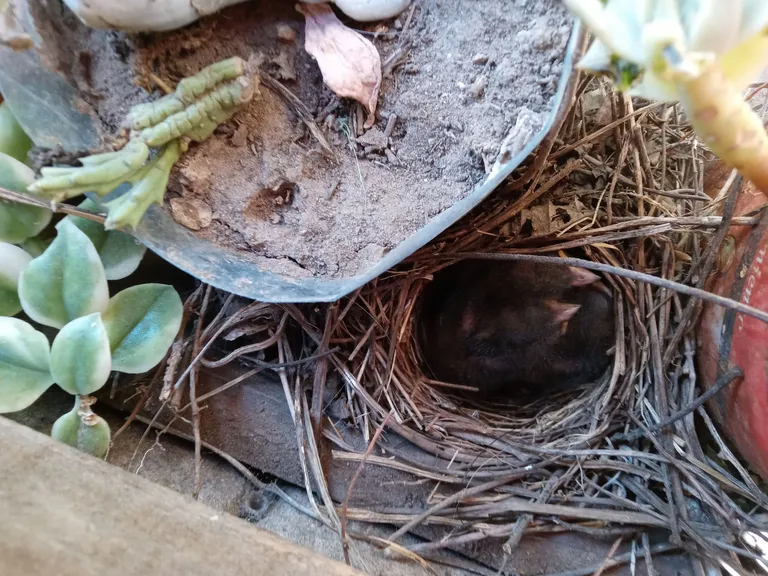
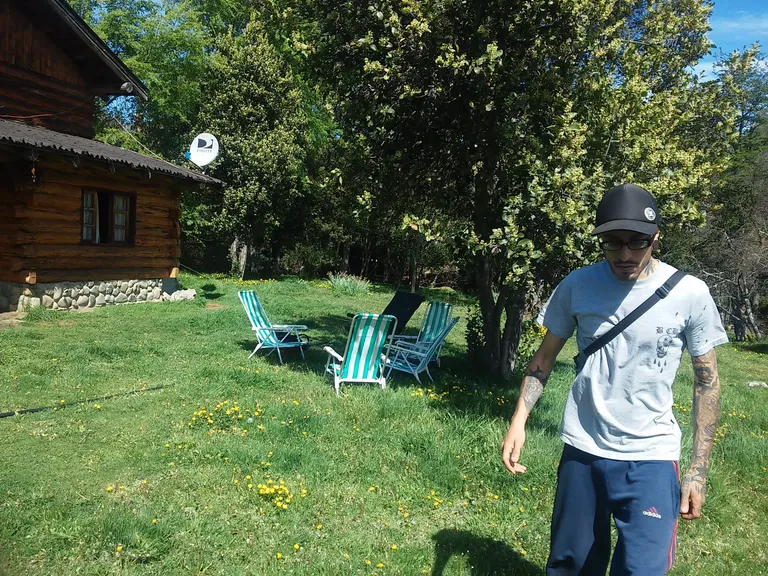
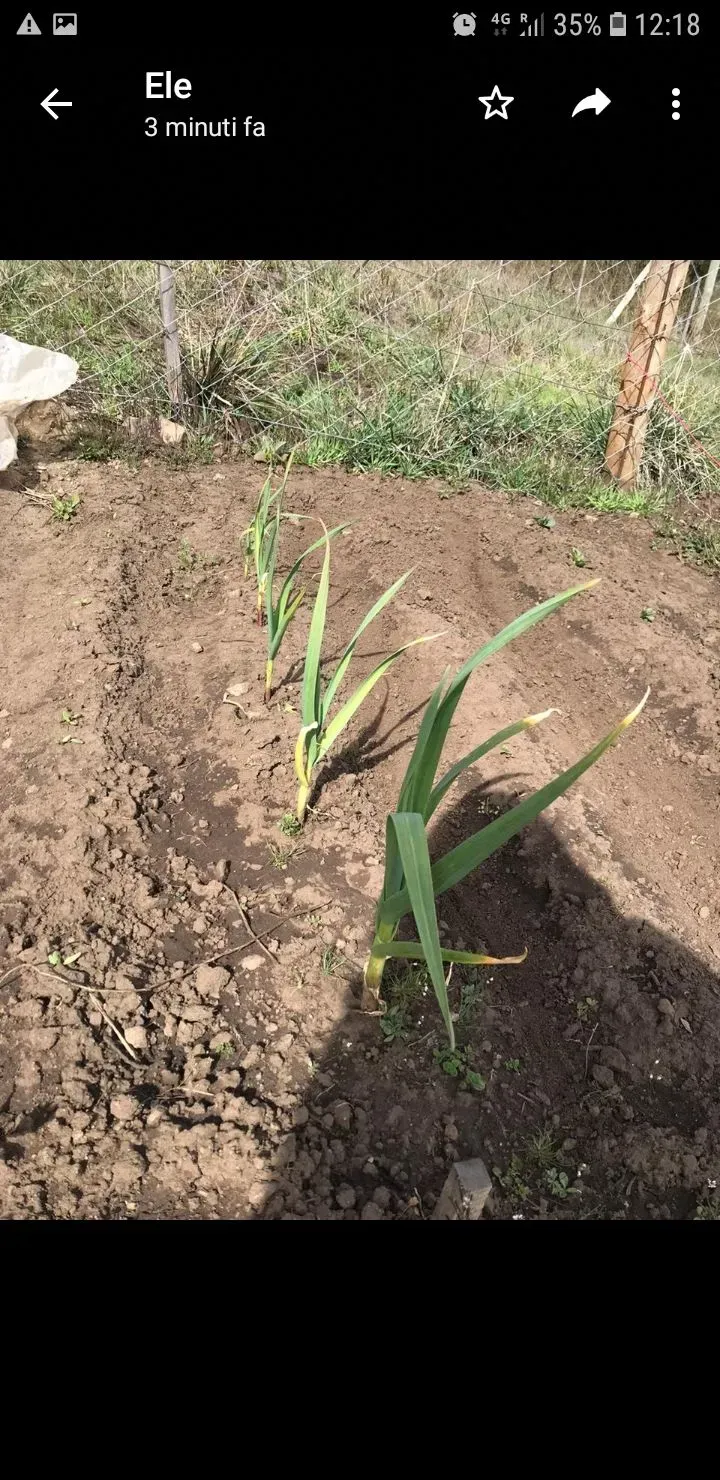
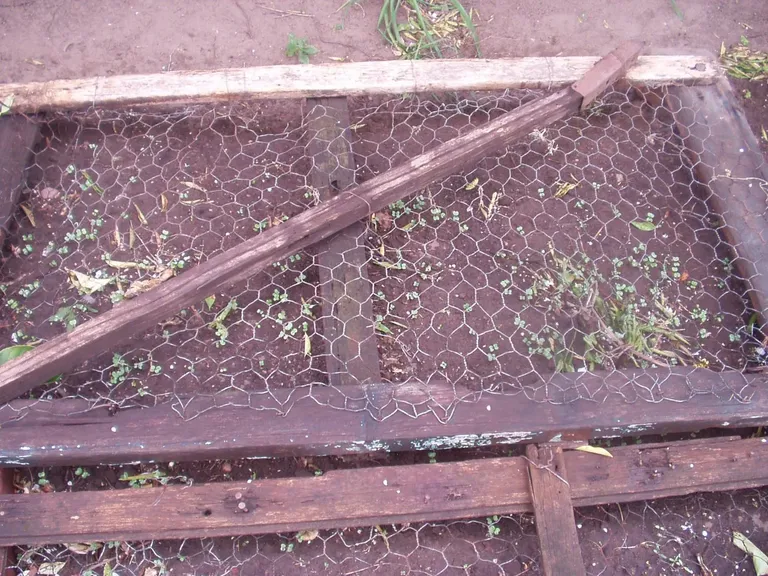
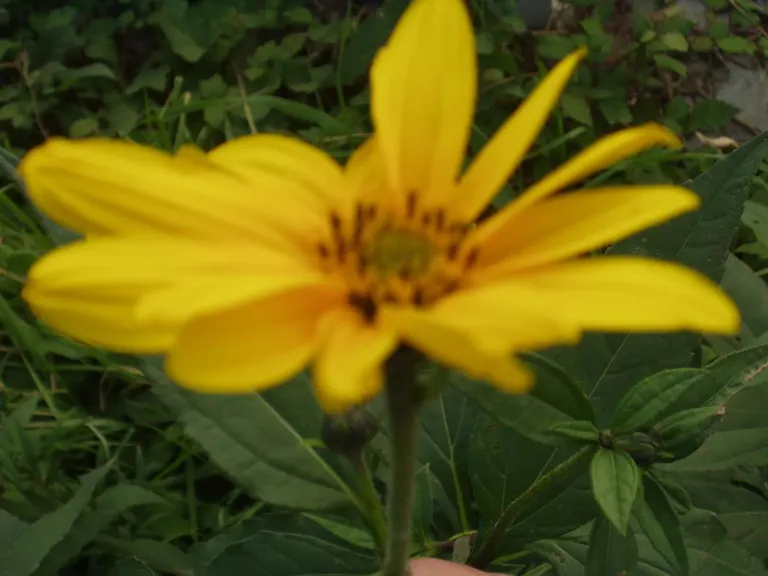
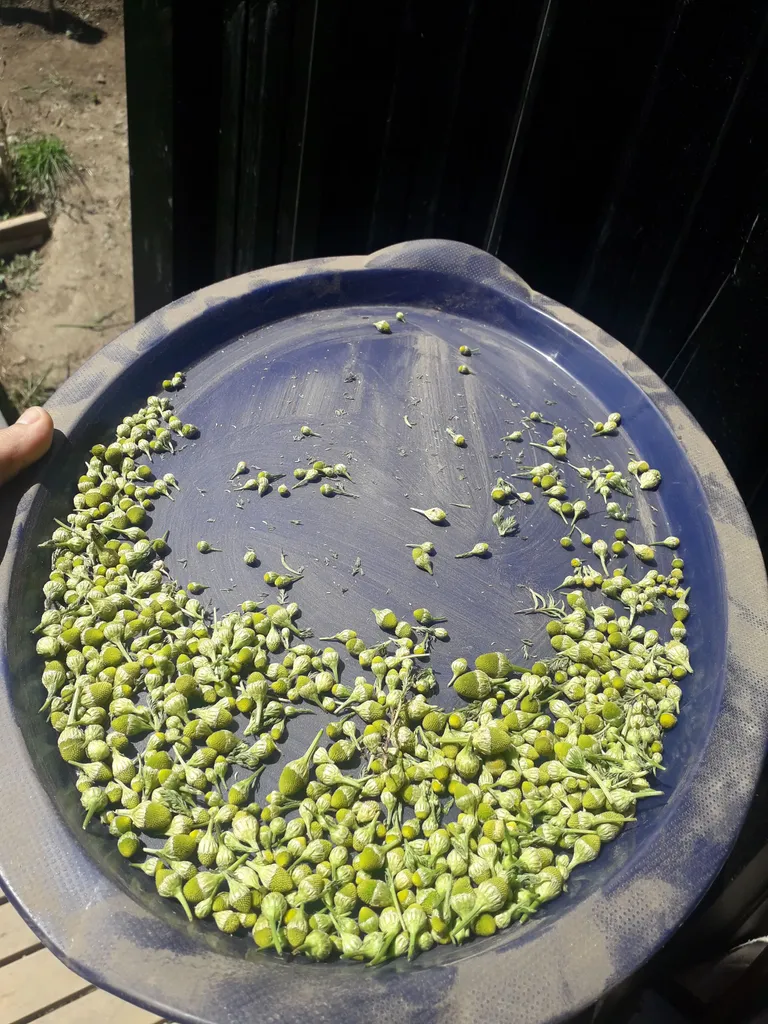
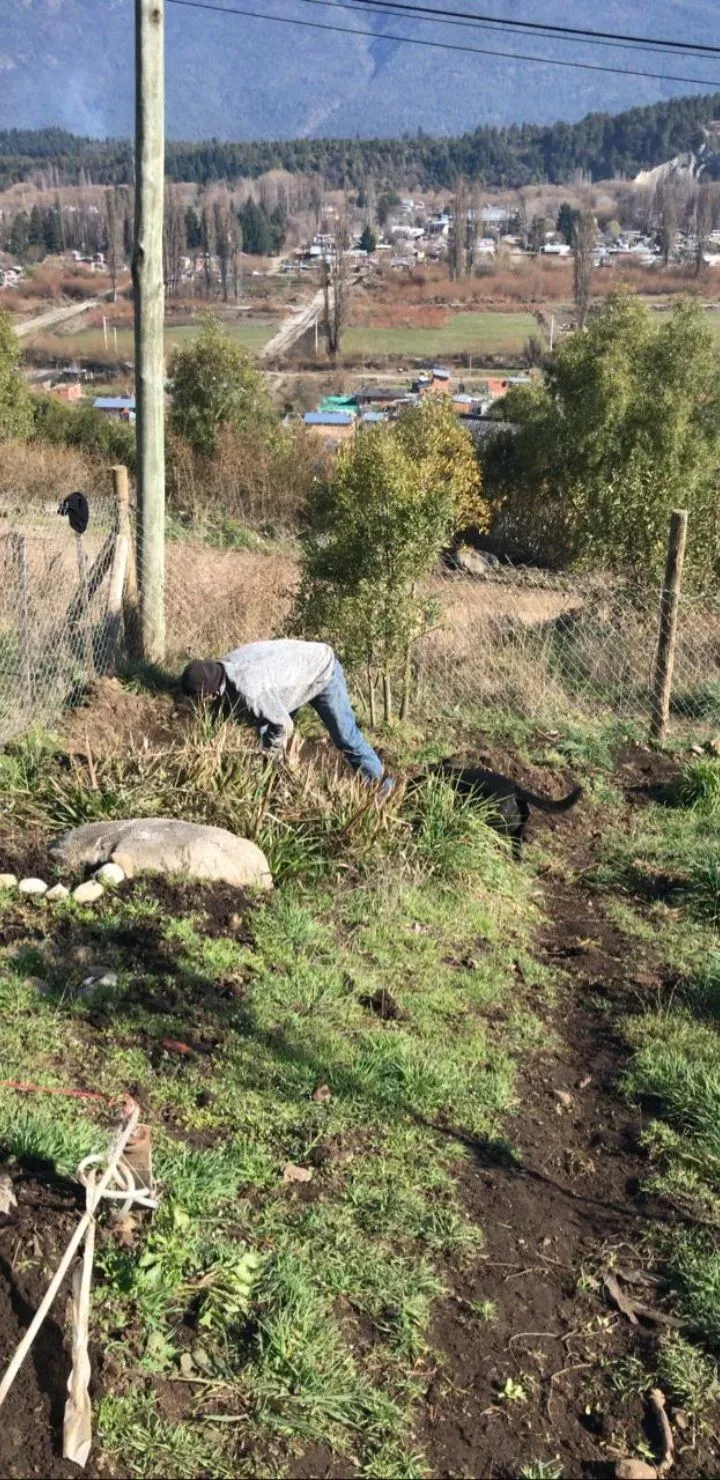
he vegetable garden offers many surprises, especially when we neglect it for a little while, especially in summer, and then we remember the work we have to do.
Clearing the land invaded by the weeds that have proliferated with the last rains and suddenly finding an isolated flower, not planted by me, that I don't know where it came from. It is decidedly beautiful with its aggressive colors.
And while I am busy turning the soil, planting new seeds, making flower beds, picking the last harvest of chamomile that will be an excellent stimulant for preparing tea during the winter, and watching how the garlic plants planted at the beginning of the summer are growing, I see something that fills me with surprise: a nest.
In the middle of the various small cactus plants grown in pots that I have lined up on a pallet left from the last move I made I find a nest of a small bird characteristic of the temperate zone of central Argentina that in popular language we call "chingolo" (Zonotrichia capensis) distinguished by having a black striped crest and having a characteristic: it announces the arrival of the hundred.
In fact, when it starts to sing with great enthusiasm, it is very likely that there is a strong wind on arrival.
I try not to disturb it and continue with my work as a horticulturist-gardener. Later I will show you how the plants are doing both inside and outside the greenhouse that I have specially built and that is giving me excellent results.

La huerta ofrece muchas sorpresas sobre todo cuando la descuidamos por un poco de tiempo, especialmente en verano, y luego nos recordamos del trabajo que tenemos que hacer.
Limpiar el terreno invadido por la maleza que ha proliferado con las últimas lluvias y de repente encontarnos con una flor aislada, no plantada por mi, que no se de donde ha salido. Es decididamente hermosa con sus colores agres.
Y mientras me dedico a remover la tierra, plantar nuevas semillas, hacer canteros, recoger la última cosecha de manzanilla que durante el invierno serán un excelente estimulante para preparar el te, y ver como van creciendo las plantas de ajo plantadas a inicios del verano, veo algo que me llena de sorpresa: un nido.
En medio de las diversas plantas de cactus pequeñas cultivadas en macetas que tengo alineadas en un pallet que me quedó de la última mudanza que hice encuentro un nido de un pequeño pajarito caraterístico de la zona templada del centro de Argentina que en el lenguaje popular llamamos "chingolo" (Zonotrichia capensis) distinguiéndose por poseer un copete con rayas negras y poseer una característca: anuncia la llegada del ciento.
En efecto cuando se pone a cantar con mucho entusiasmo es muy probable que haya un fuerte viento en arribo.
Trato de no molestarlo y sigo con mis trabajos de horticultor-jardinero. Más adelante les iré mostrando como van las plantas ya sea dentro que fuera del invernadero que he construído especialmente y que me está dando óptimos resultados.


Hive dividers/separadores: The Peak Studio.
For the best experience view this post on Liketu


